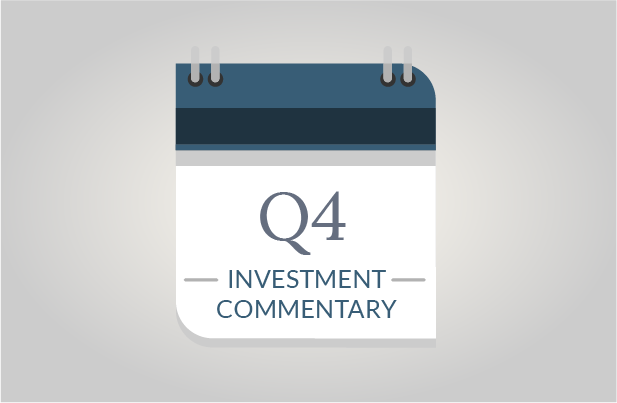- The S&P 500 posted a second year of returns in excess of 20%.
- U.S. stocks rallied throughout the year, ending in double-digit returns, despite worries about an election year.
- CPI inflation figures dipped into the 2% range for the first time since the beginning of 2021.
A Second Straight Year of Strong Performance
U.S. stocks yielded healthy and fairly steady returns throughout the year, allowing investors to capture handsome growth. This was despite a number of challenges including a slow decline in inflation, only a cumulative 1% rate cut by the Fed, a challenging election year, declining consumer discretionary income, a stunted housing market, and global instability. Despite all of these factors, the U.S. economy remained incredibly resilient.
A summary of investment market returns for the year of 2024 is as follows:
Bloomberg U.S. Aggregate (U.S. bonds) 1.25%
S&P 500 Index (large U.S. stocks) 25.02%
Russell 2000 (small U.S. stocks) 11.54%
MSCI All Country World Index ex-US 5.50%
(International Stocks)
Broader U.S. Stock Market Participation
For several years, a few top companies have dominated the markets and generated the bulk of U.S. stock market returns. Companies representing the “Magnificent Seven” (including Apple, Alphabet, Amazon, Microsoft, Meta, Nvidia and Tesla) still heavily contributed to 2024 stock market performance. However, broader participation among a long and diverse list of companies created a healthier stock market and corporate environment. The technology and communications sectors enjoyed the greatest gains, but they weren’t alone. Every sector of the market, other than materials, posted positive returns for the year. Small to mid-cap stocks also experienced a significant rally with many companies posting remarkable returns. The greater breadth of company performance throughout the economy is an incredibly positive development, hopefully generating broader economic and corporate growth in 2025.
Key Attributes of a Stellar Year
A strong economy supported an incredible year in stocks. Consumers remained resilient despite an extended decline in discretionary income; the government continued spending increases thereby pushing money into the economy; and Artificial Intelligence (AI) dramatically increased efficiency. The expansion of AI was the primary driver of why technology stocks led the markets in 2024. Interestingly, stocks soared despite the fact that corporate, consumer, and mortgage borrowing rates remained high in 2024.
Declining Inflation, but Persistent Prices and Interest Rates
The Fed cut interest rates for the first time in 2024, and inflation is now in the 2% range. Yet, many are frustrated about persistent high prices and borrowing interest rates. Some people expected lower inflation to equate to lower prices. Unfortunately (or fortunately) this isn’t true. Lower inflation only means that current prices are rising at a slower pace. Deflation would be required in order for prices to decline. While everyone would enjoy paying less for food and other items, deflation is dangerous. If prices begin falling, people delay purchases in hopes of paying even less. This stunts the economy as companies aren’t selling as many goods or services. This often translates into higher unemployment as companies struggle.
Another frustration is that interest rates have not fallen with inflation. Borrowing costs remain high because the 10-year Treasury interest rate actually rose, despite deflation declining. This is a conundrum to many but explained by an expectation of higher inflation for a variety of reasons including tariffs, deportations, and higher deficit spending. These concerns contributed to an uptick in the 10-year Treasury rate, climbing from 4.286% on the day of the election to 4.576% as of year-end.
The Trump Win and Republican Sweep
The 2024 election was fraught with uncertainty and surprises such as Biden stepping down as the Democratic presidential candidate and two assassination attempts on Trump’s life. Many investors expressed worries about the markets throughout 2024. Past returns are not indicative of future results. However, we reflect on 2024 investment performance for the full year of 2024 and post the election. We also discuss the potential impacts of political changes promised on the campaign trail.
Investment Performance Post the Election
The S&P 500 rose 25.02% in 2024 and by 2.5% on the Wednesday after Trump was announced the President-Elect as investors cheered the prospects of a pro-business environment, looser regulations, and lower tax rates. That said, interest rates spiked after the election and the S&P 500 posted a -2.38% return in the month of December, in large part due to worries about higher inflation.
Possible Tariffs
President-elect Trump has stated he will impose tariffs on several countries. Tariffs are a tax on imported goods. While they raise tax revenues, they also make imported goods more expensive which could drive inflation higher. While tariffs are likely to be imposed, it is yet to be seen if they will be at the level Trump has proposed, and if they will be on all imported goods. They were only imposed on selected goods in 2018.
Deportations
Trump has also promised mass deportations of illegal immigrants, many of whom hold jobs in the U.S. While there are varying views about illegal immigrants, their deportation would reduce the U.S. labor force when our unemployment rate is already low. Tight labor markets often push wages higher, resulting in inflation and/or lower corporate profits.
Lower Income Taxes
A Republican sweep increases the possibility of lower individual and corporate tax rates. There are two viewpoints about the potential impact relative to inflation. Individuals and corporations would have more money available, possibly offsetting the impact of paying higher prices. However, lower taxes could reduce tax revenue needed to support the deficit. It’s a delicate balance.
Size of the Federal Government
Trump has vowed to shrink the Federal government. Proposed changes could slash business regulatory costs. Furthermore, they could reduce Federal expenses, thereby lowering deficit spending and inflation.
Pro-Business Focus
One fact that is virtually certain is that Trump and most Republicans are pro-business. Hence, a desire to support businesses and the investment markets will likely factor into various political decisions.
Geopolitical Stance
Our future participation and approach to geopolitical matters is a wildcard. Thus far, global wars and tensions have not had a material impact on U.S. investments. The impact of any future changes is unknown.
Magnitude of Changes
A final important consideration is candidates seldom or never implement all of their promises on the campaign trail. Hence, the realities of the points above and other promised changes should be taken with a grain of salt.
Looking Forward
The future always holds unknowns. These can impact investment performance (whether they are anticipated or materialize). However, we remind investors that stocks prospered in 2024 in light of significant unknowns and persistently higher interest rates. Politically, we also note that stocks rallied during the election year, post the election results, and historically under both Democratic and Republican administrations. We recognize uncertainty looking forward, but also the long-term historical rewards of staying invested in a variety of environments.
SageVest Wealth Management




